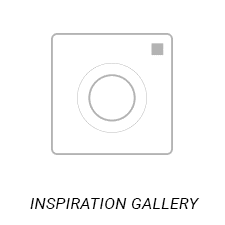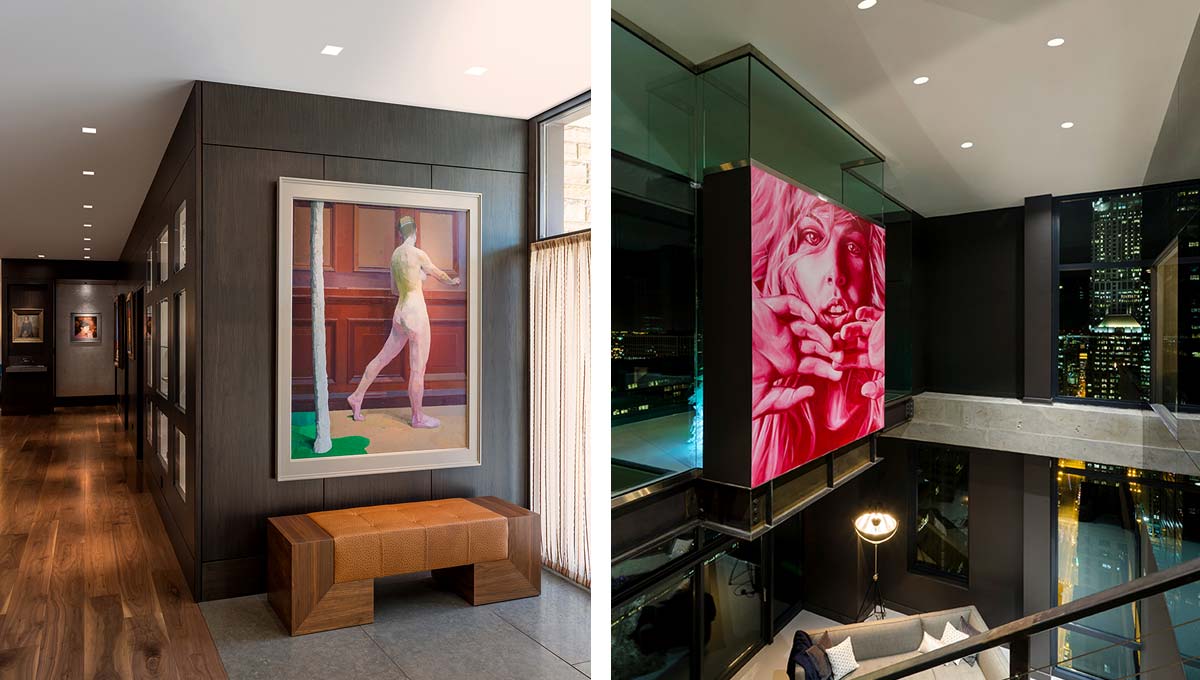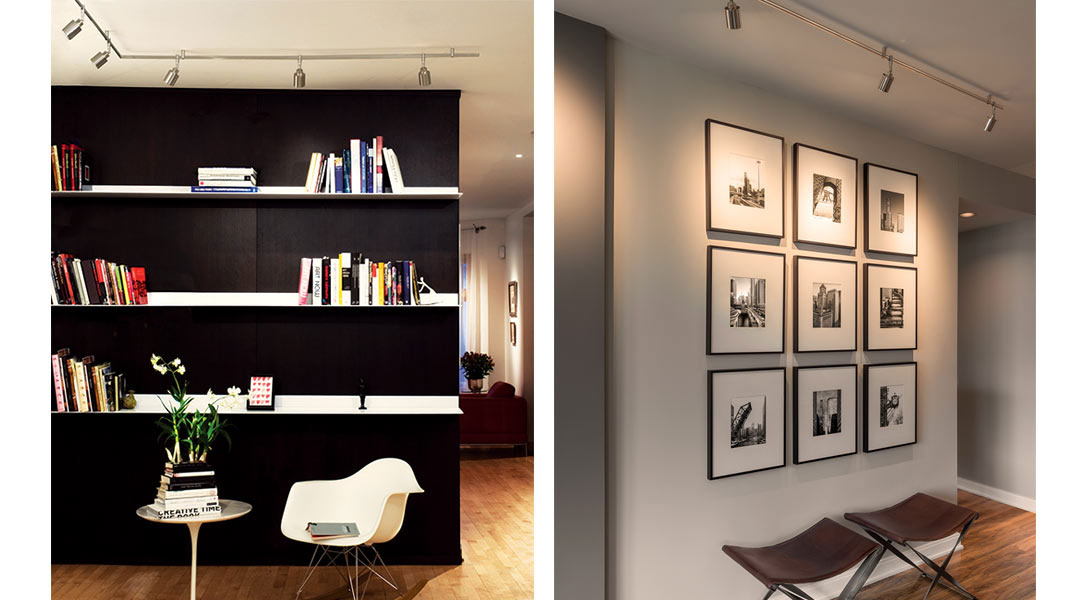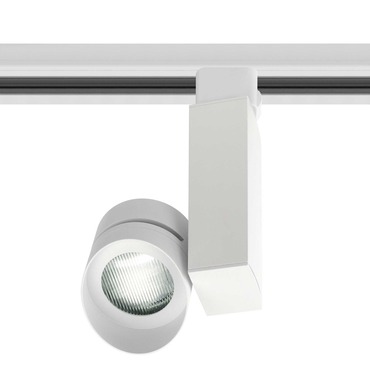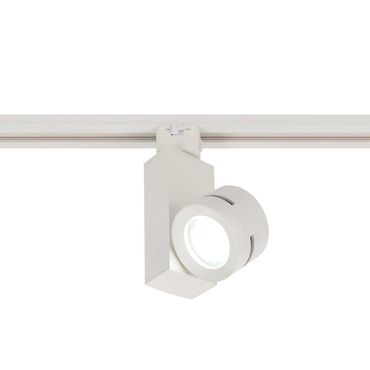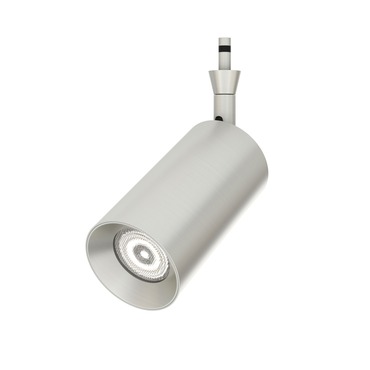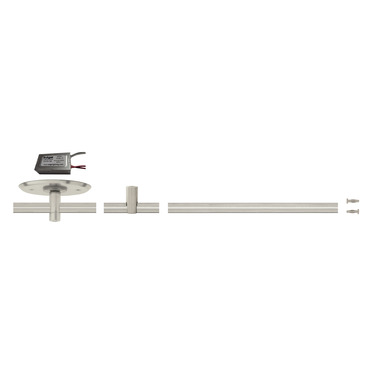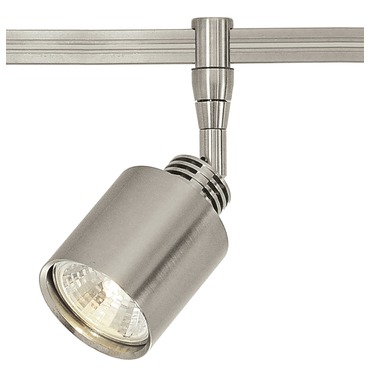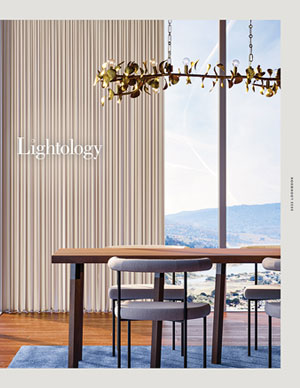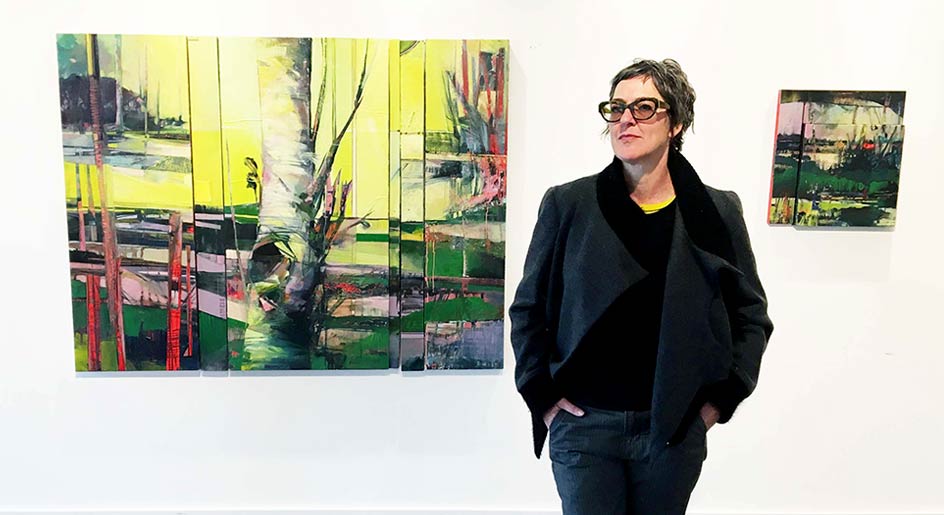
Q&A with Artist Kim Curtis:
Creativity, Color & How to Light Artwork
Art may just be the most important ingredient in any space: It brings color to the walls, texture to a room, emotion to the forefront. It sparks conversation, inspires new ideas -- a space without art is just that, space.
Displaying art is one thing, but capturing the right lighting, color, shadows and details is a true science. We caught up with Bay Area native, Chicago-based artist Kim Curtis to chat color, creativity, and how lighting helps make her colorful works pop.
My work is so color oriented, and if you can't see that because the lighting is so bad, there's no reason to put the artwork on the wall.
How did you get started in the creative world?
I grew up in Los Altos Hills, which at the time was a very rural town. My dad was in advertising and my mom was an Opera singer. I remember watching morning cartoons while my mom is doing scales; it was a very performative household. The real kickoff for me was in my middle and high school art classes. I had great teachers that created these incredibly participatory, empowering classes where the students would actually give the lectures. It made me become a sort of scholar at 15. I knew at that moment I wanted to pursue art.
From there, I studied abroad in Italy and Germany and eventually ended up an art history major back in the US at Berkeley. Back then, it was only $900 per semester - you could go to school and sort of figure it out as you went. I floated around, toying with different mediums and career paths and landed an internship designing costumes for theater. Costume design is still a big passion for me, it influences a lot of the work I do.
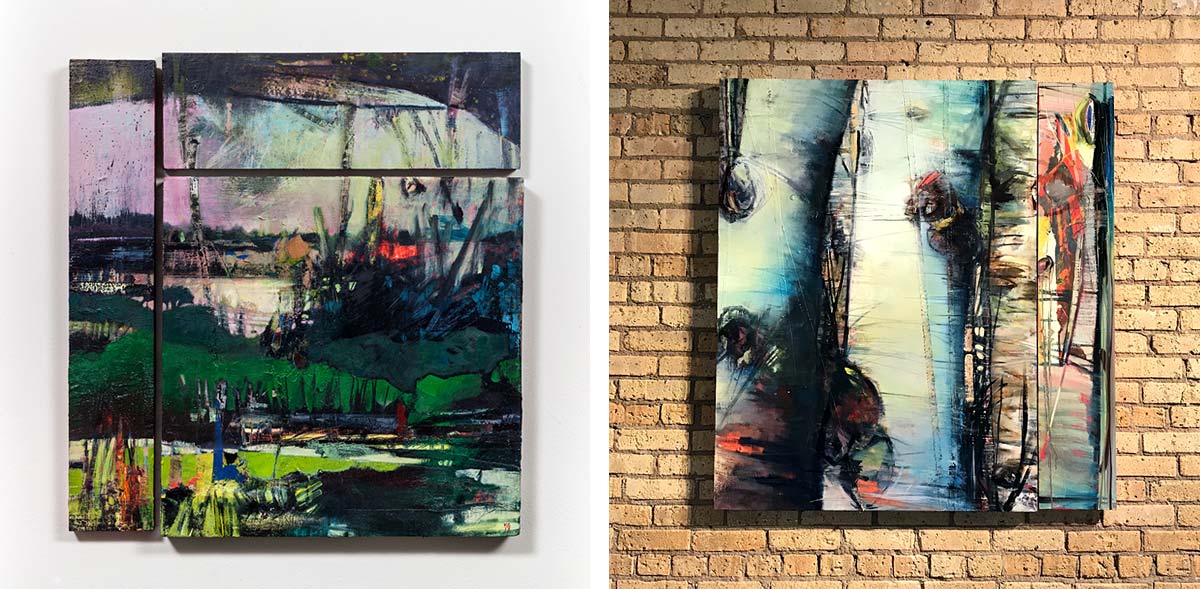
What sparked your painting career?
I spent the last three years at SFO back in art school trying to figure out my next step, and I got hired to do a costume research job in Yosemite. A big part of that job was looking at old photos and drawing - it really kicked off my love of drawing again. I go to my studio every day and paint, just because I love it. It’s a sort of cathartic problem solving for me. When my husband and I moved to Illinois, I knew I had to adapt again. The theater scene is much smaller here, so I shifted my focus from costume design and drawing to painting. It’s interesting, for years I had models to work with in art school, or pictures to reference for drawing. When we moved, I had no models anymore - my studio was in the countryside. I opened my backdoor and said “I guess I'll paint that!”
I go to my studio every day and paint, just because I love it. It’s a sort of cathartic problem solving for me.
Around this time, I met Kasia Kay, and that really catapulted things for me. She was moving her gallery Kasia Kay Art Projects from Pilsen to the West Loop in Chicago, and ended up seeing my work at Tojo Gallery while en route. She reached out to me, and that was a tremendous catalyst for me, in both creating new works and getting my name out there.
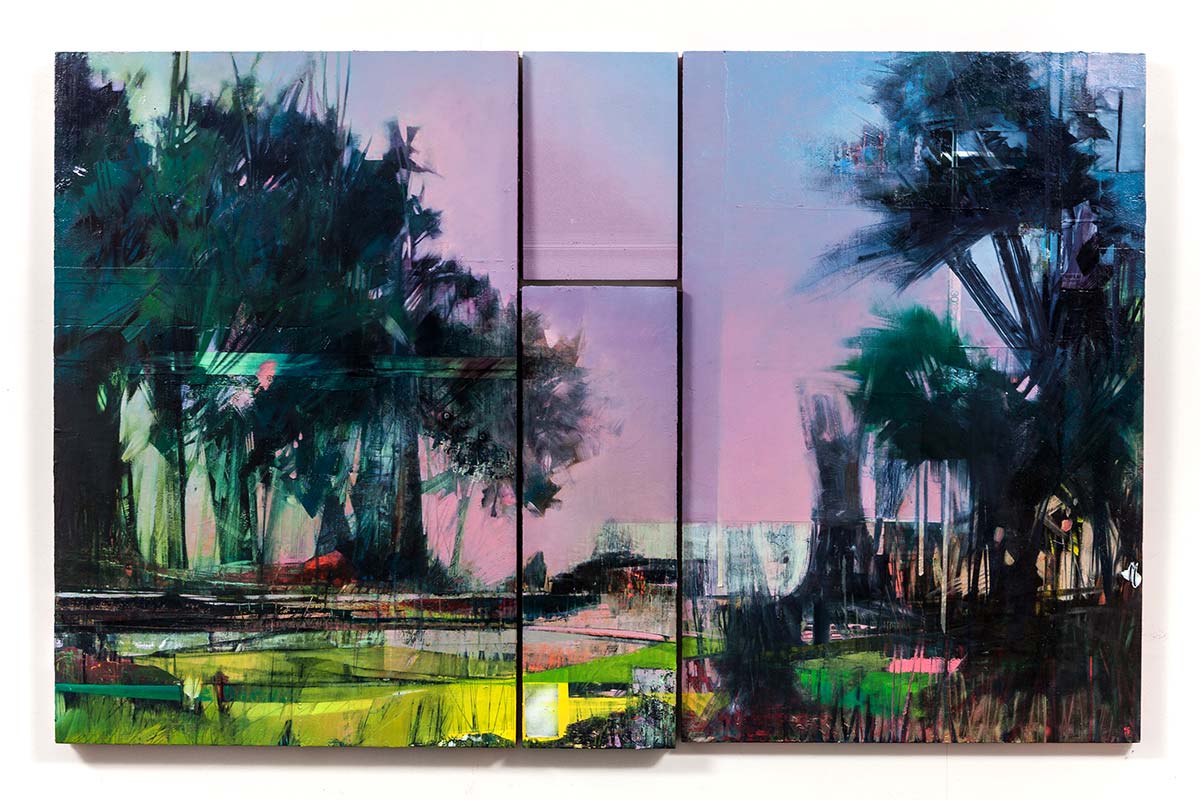
That brings us to your most recent works - Walk me through these incredibly colorful landscapes.
History and landscapes intrigue me: The amount of history in any given place, the idea that a place evolves over time, shifts in purpose, in look and feel, in the life and ecosystems it supports. I wanted to explore how to depict these incredibly rich histories visually.
I love forcing relationships between different things, and with these pieces, I took separate panels - panels from my studio, panels from previous paintings, random things I’ve discovered over the years. I started attaching them, forcing relationships, using worn and weathered objects with their own histories, and forcing them together into a new narrative, a new landscape. I experiment a lot while I’m creating, working with my wrong hand on purpose, editing back out when needed. If it starts looking too much like a landscape, I'll turn a section upside down or introduce something new so it's not too literal.
People have a fear of moving or changing something in art. Consider it all temporary, it’s all a step on the way to something else.
One of the most valuable things I learned in art school is how to create temporarily. The eraser is actually my favorite drawing tool. People have a fear of moving or changing something in art. Consider it all temporary, it’s all a step on the way to something else.
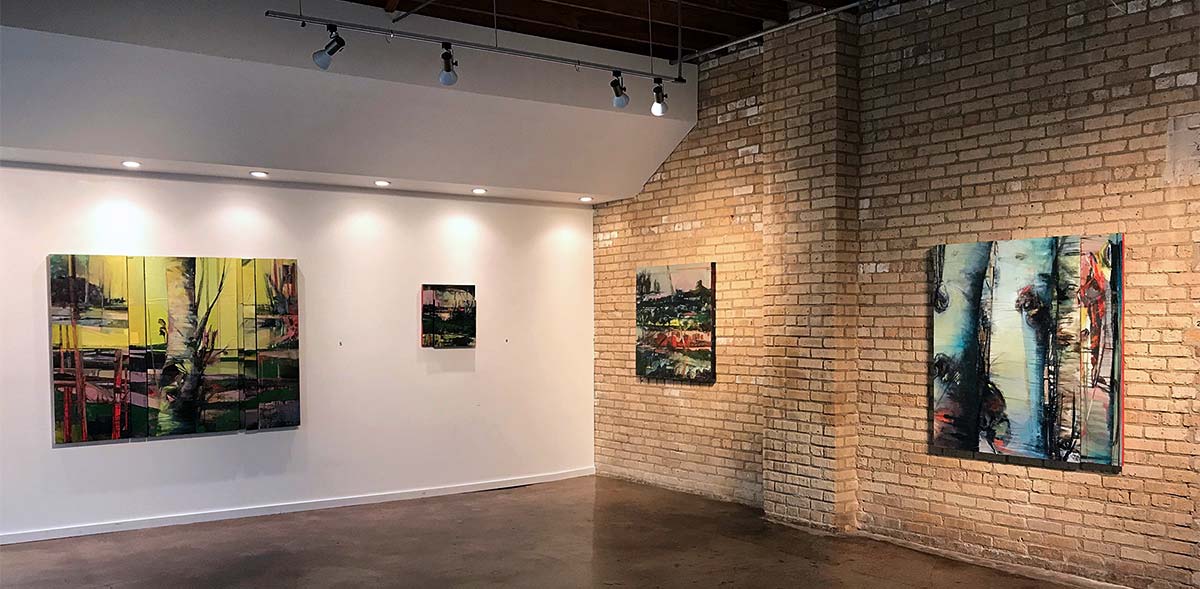
How does lighting play a role in your art?
Lighting is crucial to any work of art. In my studio, I work under three flood lights that give me full visibility and eliminate shadows. A lot of my work is color focused, and I need lighting that will show me color in its most vibrant, raw form. That said, ideal lighting conditions in the studio aren’t always suitable for lighting an art gallery or displaying art on a wall at home, but I’ll let the experts speak to that.
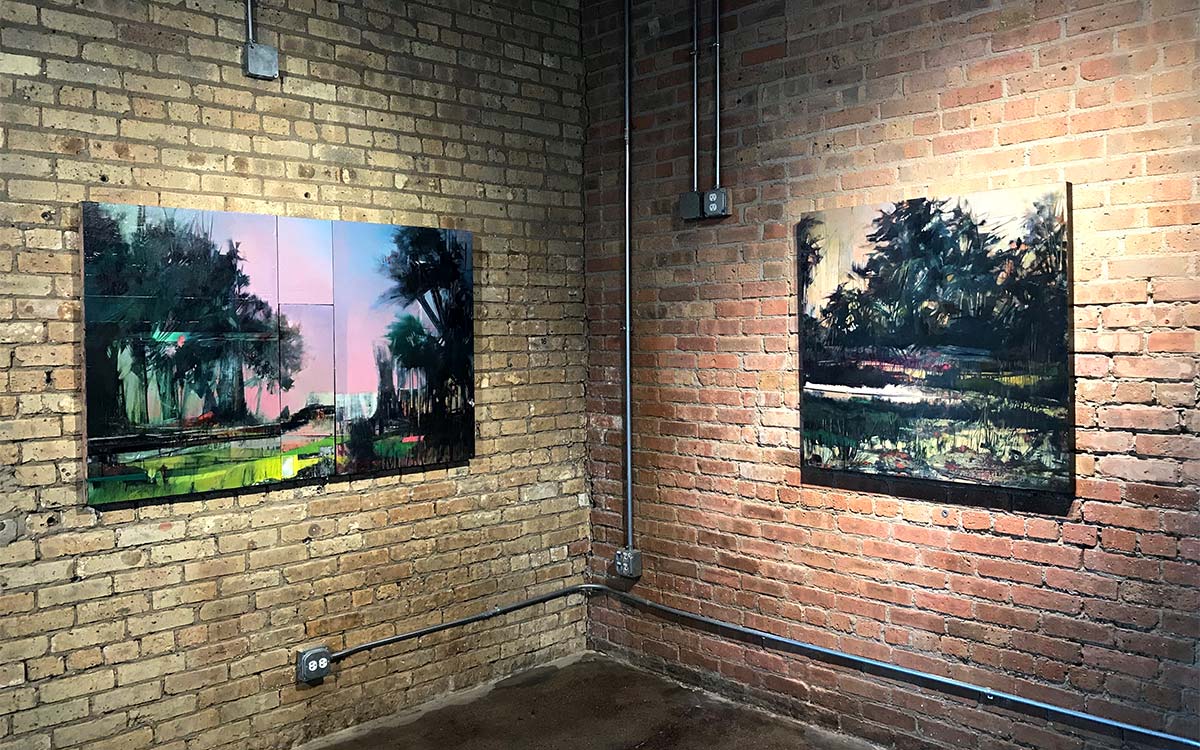
How to light artwork
Whether lighting art on your walls at home or lighting an art gallery , there are many elements to consider. Color, size, shape, shadows - art is the opposite of one-size-fits-all. Lighting artwork is a science, and a few rules of thumb can help set you on the right path.
What lights are best for lighting artwork?
Track lighting and monorail are always great options, providing both flexibility and versatility. On a track and monorail system, you can install several fixtures and adjust each individually, pointing heads in different directions, adjusting each beam spread and applying filters and diffusers as needed. You can also use recessed adjustable cans or gimbals, but you lose the flexibility and versatility of track and monorail, making it ideal in spaces where artwork is relatively stationary. For larger artworks, try two cans and cross beams to get a nice, even light on the piece. Wall washers are also a fantastic option for larger pieces or multiple works, and won’t interfere with your sightline.
What is the best light source or color temperature for art?
Always go with halogen or LED, but be careful with halogens, especially on oil paintings, as they get quite warm. LED’s offer a range of color temperature options, and give off little to no heat, making them a top choice for lighting artwork. When selecting a color temperature, consider the colors of the artwork. For warmer tones, use a lower tone like 2700K - this brings out the reds, browns and oranges. For cooler tones, use a higher temperature of 3500K or 4000K. If there are mixed colors in the artwork, a standard 3000K is a safe bet. No matter what you go with, always choose a high CRI, minimum R9 - 85+. The higher the CRI, the better you capture the true colors of the piece.
How far away should my light be from the wall?
It depends on your ceiling height, but typically for an 8ft - 9ft ceiling, you’ll want your light to be approximately 24 - 30” away from the wall, angled at 30 degrees toward the painting. Adjust as necessary, to deal with any potential glare, especially on glass.

Much like art, lighting is about experimentation. What works in one space, may not work in another. Play around with your lights, experiment with color temperatures, dimmers, hues, beam spreads. When you find your Mona Lisa moment, you’ll know.




